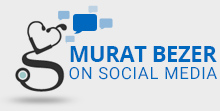Treatment of Kyphosis

A healthy spine has a cavity at the lumbar and cervical regions and a hump at the dorsal region in side view. The curvature in the back is normally 25-40 degrees. A wider angle is called kyphosis a.k.a. hunchback. Kyphosis may be caused by a slouching posture (postural kyphosis) or by a structural problem in the vertebral column (Scheuermann’s kyphosis). Structural kyphosis may have so many causes. Most cases have an unknown cause like in the case of scoliosis. Apart from these, there are various other cases of kyphosis based on congenital causes, or bone loss (osteoporosis) due to compression fractures in patients at an advanced age, or rheumatoid diseases (ankylosing spondylitis), or surgical operation, or untreated vertebral fractures (post-traumatic kyphosis). We will dwell on Scheuermann’s kyphosis in this section.
Scheuermann’s kyphosis is seen more on men than women. The disease may either emerge in the middle or lower region of the back. It often comes to light when parents notice that their children have a hump in the back which causes them to have a hard time standing straight. The difference between Scheuermann’s kyphosis and postural kyphosis is that people with a postural kyphosis can stand straight if they wanted to. However, they slouch again in a short time due to the muscles in the back getting tired rather quickly. In Scheuermann’s kyphosis, the patient is unable to stand straight due to the spinal problem even if he/she wanted to.
The method of treatment for patients diagnosed with kyphosis varies according to their age, the level of the disease and whether they are relatively flexible or not. In Scheuermann’s kyphosis, patients that have a small excess of kyphosis angle receive a follow-up program. In these programs, we monitor the measurements until a certain age by x-rays and see if there is a progress in the disease or not.
For patients who are diagnosed early enough to be in a moderate level of the disease, brace treatment can stop the increase of kyphosis angle and even possibly decrease it. The success of brace treatment relies on the quality and suitability of the brace, the treatment starting before the ages of puberty, the patient’s and his/her family’s adjustment to the treatment, and physical exercises.
Surgical treatment comes into question for the patients who are not treated enough with bracing or who are older than the ages of puberty and have a kyphosis angle above 75 degrees. The main problem for these patients is that the hunchback causes the weight center of the body to be unbalanced due to the failure of distributing the body weight properly among the vertebral column. Surgical treatment allows correcting the kyphosis in the spine and refixing the vertebral bodies. So the recovery is permanent. This treatment also prevents possible lung and heart diseases as well as any future musculoskeletal problems by correcting (rebalancing) the weight center of the body. Cosmetic problems, which constitute the main complaint of most patients and cause psychological problems are also permanently eliminated after the operation.
Patients who walk the day after the operation are usually discharged from hospital in the 5th day and return to their normal lives largely after no more than 1 month.








